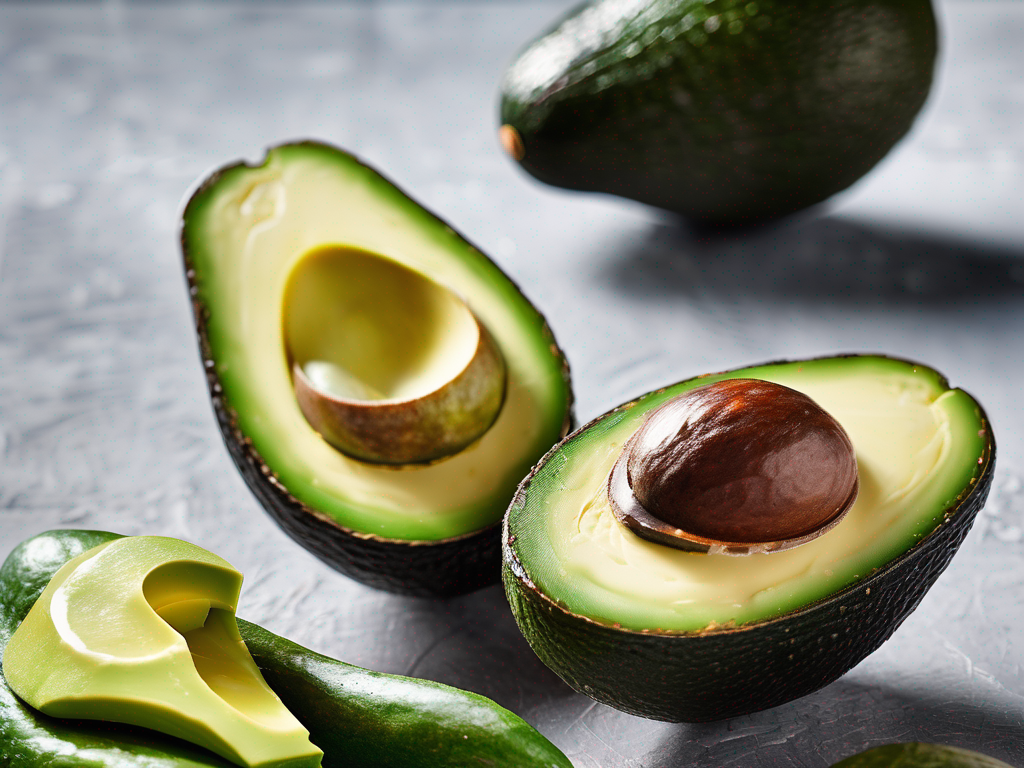
How to Tell if Your Fresh Avocados Whole Have Gone Bad
Get Your Free Food Safety Cheat Sheet
30 most common foods with instant answers. Print it and stick it on your fridge—completely free!
How to Tell if Your Fresh Avocados Whole Have Gone Bad
Avocados are a beloved fruit known for their creamy texture and versatility in various dishes. Whether you enjoy them in guacamole, salads, or on toast, ensuring the freshness of your avocados is crucial for both flavor and safety. In this blog post, we will explore how to determine if your fresh avocados whole have gone bad, as well as provide tips on proper storage to extend their shelf life. (Fresh avocados whole)
Signs of Spoiled Avocados
When it comes to avocados, freshness is key to enjoying their optimal taste and texture. Here are some common signs that your fresh avocados whole may have gone bad:
1. Visual Inspection
- Discoloration: Check for any dark spots or patches on the skin of the avocado.
- Mold: Mold growth, especially around the stem area or any crevices, indicates spoilage.
- Wrinkled Skin: A shriveled or excessively wrinkled skin is a sign of dehydration and loss of freshness.
2. Texture and Smell
- Mushy Consistency: Gently squeeze the avocado – if it feels overly soft or mushy, it may be past its prime.
- Off Odor: A sour or fermented smell coming from the avocado is a clear indicator of spoilage.
3. Taste Test
- Bitter or Rancid Flavor: If the avocado tastes bitter or has an off flavor, it is best to discard it.
Proper Storage Tips for Avocados
To maximize the shelf life and quality of your fresh avocados whole, follow these storage tips:
1. Ripening Process
- Room Temperature: Allow unripe avocados to ripen at room temperature, away from direct sunlight.
- Ethylene Exposure: Place avocados in a paper bag with a banana or apple to speed up the ripening process.
2. Refrigeration
- Ripe Avocado: Once ripe, store avocados in the refrigerator to slow down the ripening process.
- Cut Avocado: If you have leftover cut avocado, store it in an airtight container with a squeeze of lemon or lime juice to prevent browning.
3. Freezing
- Puree Avocado: Freeze mashed avocado in an airtight container for future use in smoothies or dips.
- Avocado Halves: Freeze avocado halves by brushing them with lemon juice and wrapping them tightly in plastic wrap.
Safety Precautions
When handling and storing avocados, it is essential to practice food safety to reduce the risk of contamination and foodborne illness. Here are some safety precautions to keep in mind:
- Wash Hands: Always wash your hands before and after handling avocados.
- Clean Cutting Surfaces: Use clean utensils and cutting boards to prevent cross-contamination.
- Refrigerate Promptly: Store avocados in the refrigerator promptly after cutting or when they reach the desired ripeness.
- Avoid Temperature Abuse: Do not leave avocados at room temperature for extended periods, especially in warm environments.
Conclusion
In conclusion, understanding how to identify spoiled avocados and employing proper storage practices are essential for enjoying fresh and flavorful fruit. By being mindful of visual cues, texture, smell, and taste, you can easily determine if your fresh avocados whole have gone bad. Remember to follow the recommended storage tips and safety precautions to prolong the shelf life of your avocados and reduce food waste. With these guidelines in mind, you can savor delicious avocados in your favorite recipes while maintaining food safety standards.
For more information on fresh avocados whole, visit [this link](/food/fresh avocados whole). (Fresh avocados whole)
Authoritative Food Safety References
These agencies and university labs inform every tip and health precaution we publish.
USDA FoodKeeper – Cold Storage Guidelines
Official refrigerator, freezer, and pantry timelines maintained by the U.S. Department of Agriculture.
Visit USDA FoodKeeperFDA Produce Safety Rule & Grower Guidance
Field-to-fridge handling practices that prevent contamination of fruits, vegetables, and leafy greens.
Visit FDA Produce SafetyCDC Foodborne Illness Prevention Hub
Surveillance-backed guidance on pathogens, symptoms, and steps to reduce foodborne illness risk.
Visit CDC Food SafetyUC Davis Postharvest Technology Center
University research detailing optimal storage atmospheres for produce after harvest.
Visit UC Davis PostharvestPenn State Extension – Home Food Preservation & Safety
Peer-reviewed extension bulletins on safe canning, chilling, and reheating practices.
Visit Penn State ExtensionGet Your Free Food Safety Cheat Sheet
30 most common foods with instant answers. Print it and stick it on your fridge—completely free! Want more? Upgrade to the complete guide with 70+ foods.
Scan your food directly and get instant safety info using our AI-powered camera feature.